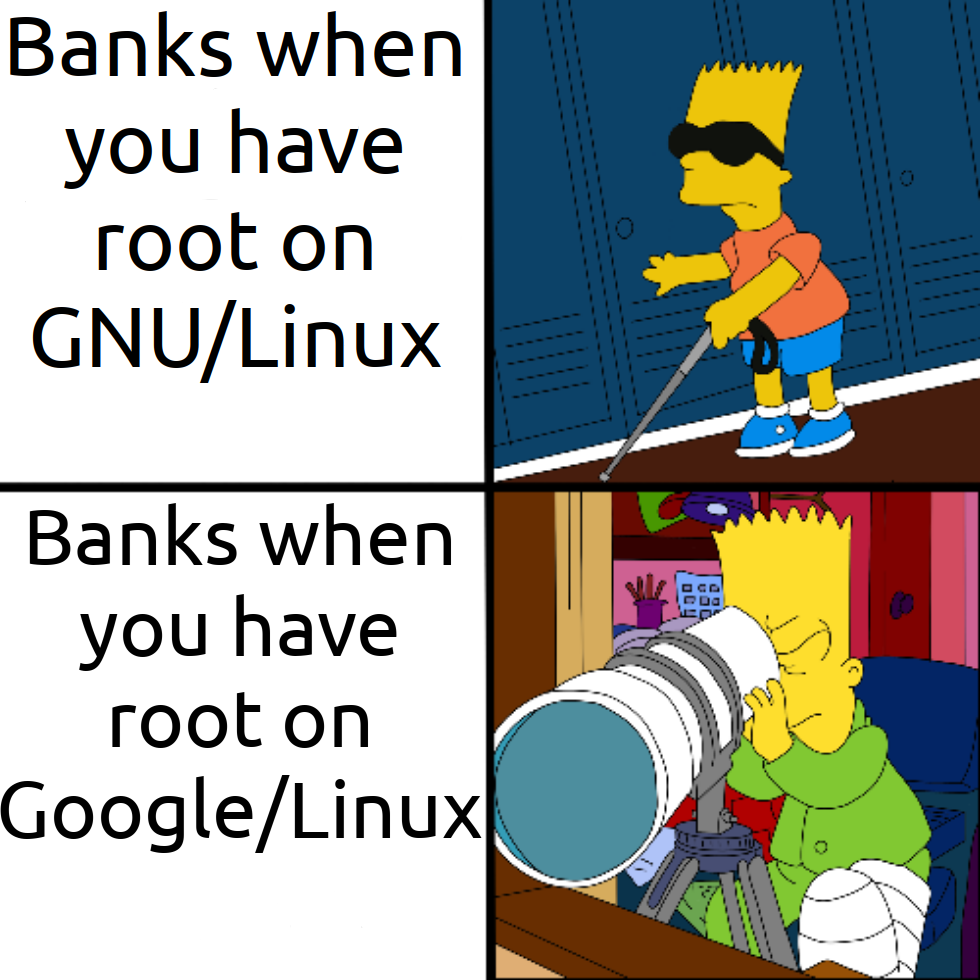this post was submitted on 04 Apr 2024
1019 points (98.8% liked)
linuxmemes
20880 readers
6 users here now
I use Arch btw
Sister communities:
- LemmyMemes: Memes
- LemmyShitpost: Anything and everything goes.
- RISA: Star Trek memes and shitposts
Community rules
- Follow the site-wide rules and code of conduct
- Be civil
- Post Linux-related content
- No recent reposts
Please report posts and comments that break these rules!
founded 1 year ago
MODERATORS
you are viewing a single comment's thread
view the rest of the comments
view the rest of the comments

I guess I don't know what you mean by "authenticating transactions".
Online transactions require a second factor which displays the actual amount to be transferred. This works by either an app which receives the transaction data (recipient, how much) over the network, or a device which takes the bank card and is used to scan something similar to a qr code. The device then displays the transaction data.
This makes sure a fraudulent site can't easily change the amount or the recipient of a transaction, even if they somehow made an identical website (or close enough).
https://www.ecb.europa.eu/press/intro/mip-online/2018/html/1803_revisedpsd.en.html
It's not perfect, especially with people using a banking app and the second factor app on the same device for convenience sake.
Interesting. If they do that in the US some day, I would absolutely much rather buy that device than unroot my phone.